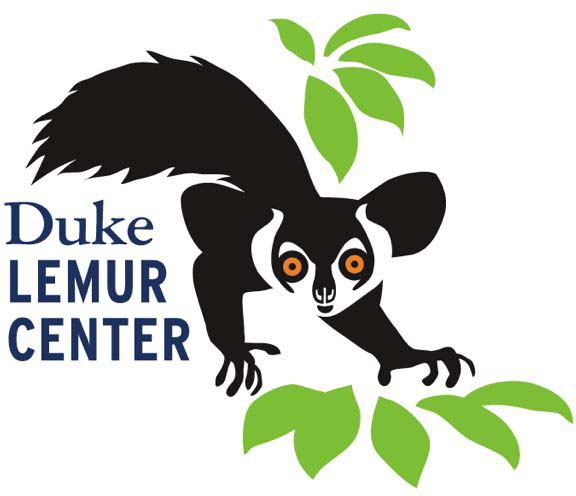Evolution of lemur hibernation
– by Dr. Marina Blanco, Post-Doctoral Associate Hibernation Research Project, Duke Lemur Center
October 23, 2012 — I recently joined the Duke Lemur Center to participate in the multidisciplinary Hibernation research project. After a few years studying the reproductive biology of eastern mouse and dwarf lemurs of Madagascar, I became fascinated by one of the most unique lemur traits: hibernation. Since 2006, I have been conducting fieldwork at Tsinjoarivo forest, central-eastern Madagascar, where I have been studying two sympatric dwarf lemur species: Cheirogaleus sibreei and C. crossleyi in habitats with different levels of forest fragmentation and disturbance.
Although hibernation is a common metabolic strategy found in members of all major groups of mammals, birds and other vertebrates, it is rare among primates. In fact, the ability to express heterothermy, i.e., reduction of metabolic rates and body temperature by using torpor (less than 24-hour bouts) or hibernation (longer than 24-hour bouts), is only found in some nocturnal lemur species of the family Cheirogaleidae (e.g., mouse and dwarf lemurs) and in members of another group of small-bodied nocturnal strepsirrhines: the galagos. Yet, dwarf lemurs are the only-known obligatory hibernators among the primates.
Unlike the very speciose mouse lemurs –more than 20 species and counting–, dwarf lemurs are less diverse with only four recognized living species: fat-tail dwarf lemurs (C. medius) are primarily found in the dry deciduous forests of western Madagascar (but they can also be seen at the Duke Lemur Center, which currently houses 16 individuals), whereas C. major and C. crossleyi occupy eastern rainforests. The recently-rediscovered C. sibreei has only been found in the high-altitude forests of Tsinjoarivo, where it lives in sympatry with C. crossleyi.
In the last few years, I became intrigued by differences in hibernation patterns among dwarf lemur species and the “mystery” around the evolution of heterothermy in primates: was heterothermy a primitive condition maintained in galagos and cheirogaleids? or was it a derived trait that evolved within cheirogaleids independently from their cousins, the galagos?
Needless to say, there is no conclusive answer; well-respected researchers have taken opposite positions in this debate and current sources of data cannot categorically discredit either hypothesis. Ideally, you would like to find the right fossils (common ancestors of all strepsirrhines) and be able to identify a “hibernation” signal on those remains. The impossibility of that scenario calls for alternative options: e.g., use of the comparative method to gather data from a variety of disciplines such as molecular biology, phylogenetics, paleoclimatology and ecophysiology of living primate hibernators.
If you were to ask me, I am currently favoring the “hibernation as a derived trait” position, based on the following points:
1-All mammals, hibernators and non-hibernators, appear to have the molecular basis for heterothermy (i.e., set of genes that seem to be involved in the expression/regulation of torpor or hibernation) and thus, turning on or off those genes may not be as biologically challenging as it was originally thought.
2-Based on recent genetic analyses, Sibree’s dwarf lemurs hold a basal position in the dwarf lemur clade (first split within this group, before C. medius, C. crossleyi and C. major), and thus, they may have retained the ancestral condition for a number of traits. Interestingly, this is the only dwarf lemur species with a geographic distribution restricted to high-altitude habitats, i.e., the coldest environments in Madagascar. Inferences can be made as to whether these conditions may have favored the use of hibernation.
3-The family Cheirogaleidae is deeply embedded in the phylogeny of lemurs and diversified relatively recently (~22Mya).
4-Recent models attempting to reconstruct the paleoclimate of Madagascar suggest that dramatic climatic changes (establishment of current wind patterns, source of environmental unpredictability) occurred in the island around the time of dwarf lemur diversification. Under these conditions, strong selective forces may have favored energy-saving strategies such as hibernation.
Although the debate is far from over, it certainly makes for fascinating conversations…
*This article was edited on October 24, 2012 to reflect additional information mistakenly omitted from the original post.

